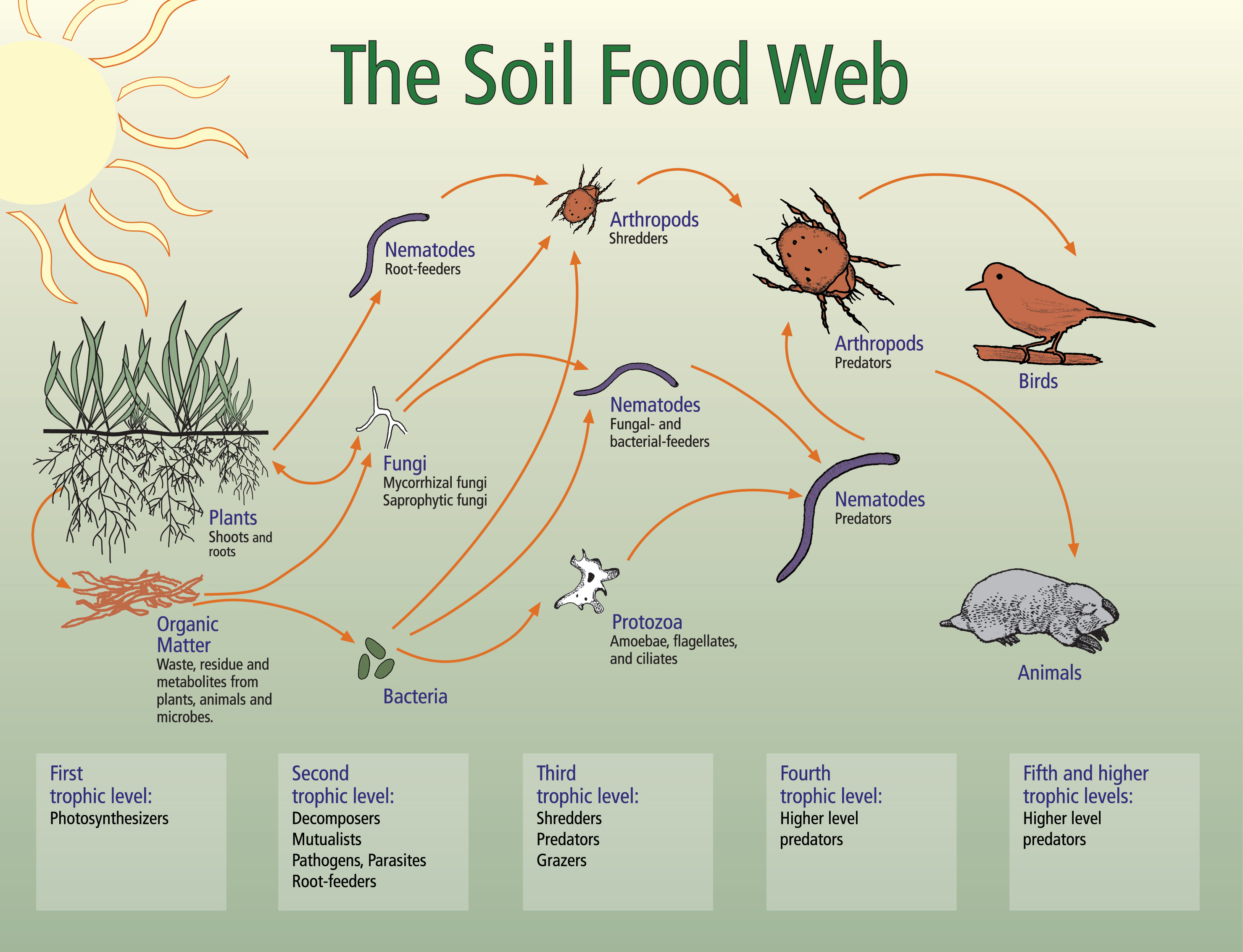The term soil health is used interchangeably with soil quality, but in this article I prefer the use of soil health because it is a more appropriate term in defining soil functions as a living and dynamic natural system.
Soil health is a condition, or status, of the soil at a certain place and in a specific environment as compared to a certain reference or benchmark condition. However, the concept of soil health can vary in use based on the priorities placed on different soil functions. Therefore, the concept of soil health should be understood within the context and intention of the users of the soil health term, their goal and the boundaries in which they are working.
In general, soil health, as a measure of soil functions, can be defined as the optimum status of the soil’s biological, physical and chemical functions. This means healthy soils can sustain plant and animal productivity and soil biodiversity (Fig. 1), maintain or enhance water and air quality, and support human health and wildlife habitat. The underlining principle for a healthy soil is not just a medium to grow plants, but rather a living, dynamic and changing environment that is influenced by what we do and the practices we adopt as human activities. If we agree that the soil is a dynamic and living organism, then we need to apply the human health principles as its metaphor. We, as humans, strive for healthy bodies to perform our tasks most efficiently, and so do soils.
To understand soil health and how different human activities (i.e., cultivation, land use, etc.) impact it, we need to understand the soil. The soil is a heterogeneous natural body, which basically consists of solid particles (mineral particles), organic matter, water and air. The soil also contains micro and macro organisms that support plant, animal and human life. Its functions as a heterogeneous natural body consist of providing support as the medium for plant growth, the storage and supply of water and nutrients, the purification of pollutants, and wildlife habitat.
 click to enlarge |
Organic matter is one of the smallest components of the soil system, but plays an essential role in maintaining soil health/functions. Soil organic matter is derived from living organisms, such as plants and animals, and their byproducts in the soil environment. When organic matter breaks down, it is transformed into different pools as sources of plant nutrients at various degrees of availability and eventually forms the final product called humus. This product becomes the central building block of healthy soil.
Therefore, the maintenance of soil organic matter is critical to the health and productivity of the soil: providing a stable soil physical structure for water storage, nutrient exchange with plant roots, aeration and a healthy microbial community will enhance soil health for healthy plant growth.
In agricultural systems, such as row cropping systems, significant stress is exerted on soil functions through management practices such as soil tillage, chemical application and continuous mono-cropping systems. However, management practices, such as soil conservation systems, including no-tillage and extended crop rotations can mitigate negative effects on soil health/functions.
A no-till system can restore soil health over time by improving, for example, soil infiltration, organic matter, water storage, soil structure, etc., which are indicators of soil health. The extended crop rotations that include small grains, legumes and cover crops will increase soil biodiversity and protect the soil surface physically during the off season and provide organic carbon input. The introduction of perennials on marginal land can increase wildlife habitat and improve the biological and physical components of soil health. These practices are measures to build healthy soil, which can improve both productivity and the environment.
When the soil is managed as a natural heterogeneous ecosystem by diversifying the input of plants, animals and wildlife, we incorporate the natural order of soil generation principles that led to the forming of the soil. The challenges we face in many parts of the world nowadays are the outcomes of human activities that affect soils by accelerating soil degradation and soil erosion, and decreasing water quality and quantity, which are future food security challenges. These challenges can be mitigated through thoughtful and balanced management practices that enhance soil health sustainably as the first step in establishing potential solutions for these problems.





